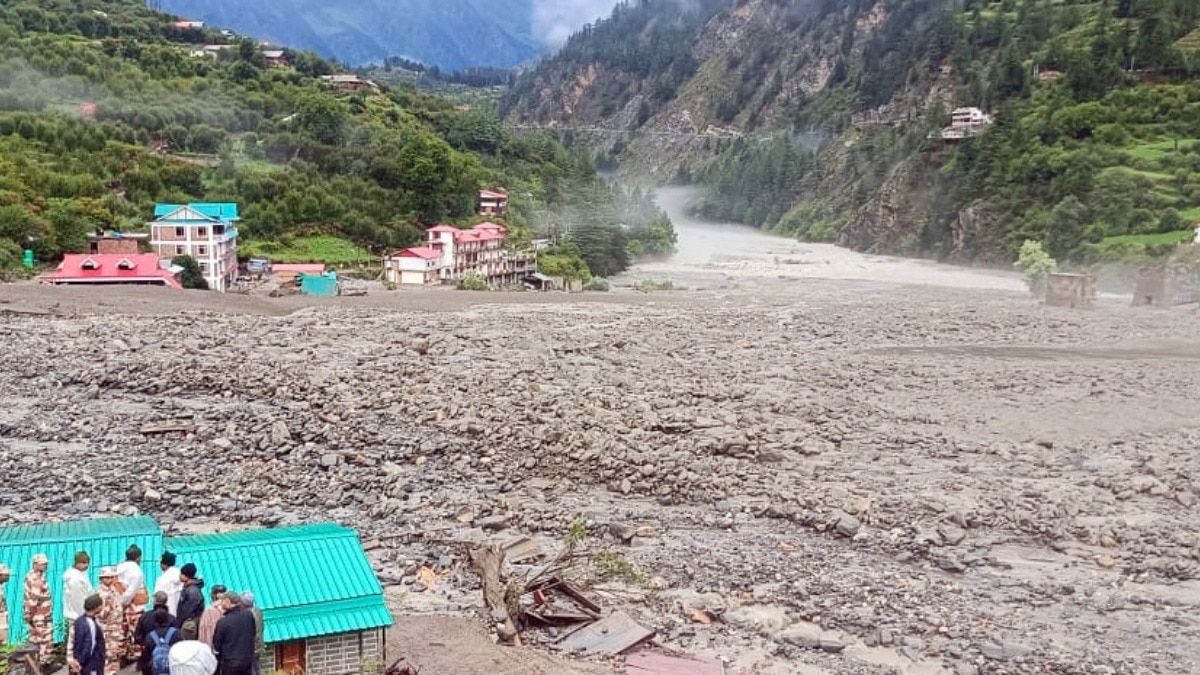 |
|
The state of Uttarakhand, nestled in the Himalayas, grapples with recurring natural disasters, raising critical questions about the interplay between geological vulnerability, human activities, and climate change. The recent Dharali cloudburst, resulting in devastating flash floods and landslides, serves as a stark reminder of the state's precarious position. This event, coupled with a history of calamitous incidents, including the 2013 Kedarnath floods, the 2021 Chamoli avalanche, and the frequent landslides during monsoon seasons, underscores the urgent need for a comprehensive understanding of the factors contributing to these disasters. These are not isolated incidents but rather symptoms of a deeper, long-standing crisis that demands immediate attention and proactive measures. The question is not whether disasters will occur, but rather why they are occurring with such increasing frequency and intensity, and what can be done to mitigate their devastating impact. The article highlights the multifaceted nature of the problem, delving into the geological vulnerabilities of the region, the escalating impact of human activities, and the exacerbating effects of climate change. It emphasizes the importance of addressing these interconnected factors to build a more resilient and sustainable future for Uttarakhand.
One of the key factors contributing to Uttarakhand's vulnerability is its unique geological setting. The region lies within the Himalayas, a young and tectonically active mountain range. The presence of the Main Central Thrust (MCT), a major geological fault line, further amplifies the region's susceptibility to seismic activity and landslides. According to Charu C. Pant, a retired professor of geology, the Great Himalayan Granite stone, a part of the Greater Himalayan Sequence, plays a crucial role in the geological instability of the region. This granite mass, acting as a hard and brittle block between two tectonic forces, transfers energy to adjacent rocks, which are already fractured and weakened. This process leads to the crushing, shearing, and pulverization of these rocks, creating a deeply fractured and unstable zone along the MCT. This unstable zone becomes prone to landslides, rockfalls, and rapid erosion, especially during heavy rainfall or seismic activity. Furthermore, the narrow valleys through which the rivers flow in Uttarakhand exacerbate the risk of cloudbursts. Water-bearing clouds trapped between the tall and steep mountains precipitate intensely, resulting in cloudbursts, which in turn trigger landslides and debris flows. These debris flows, carrying mud, stones, and other solid elements, have a higher erosive power, causing significant damage to infrastructure and settlements in the lower areas. The western disturbances, weather systems originating over the Mediterranean Sea, further intensify the rainfall, increasing the likelihood of landslides and floods.
In addition to geological factors, human activities have significantly contributed to the escalating frequency and intensity of natural disasters in Uttarakhand. Unprecedented construction in the Himalayan region, including on riverbeds, and rising population and human activity have placed immense pressure on the fragile ecosystem. The construction of large-scale infrastructure projects, such as hydel projects and road-widening projects, often disregards environmental assessments and disrupts the natural drainage patterns, making the region more vulnerable to landslides and floods. The Char Dham Highway project, for example, has faced significant controversy due to its environmental impact. The project involves the widening of approximately 900 km of roads, which has led to deforestation, slope instability, and increased risk of landslides. Similarly, the construction of hydel projects can alter river flows and increase the risk of flash floods. Unplanned urbanization and tourism have also contributed to the problem. The increasing demand for land has led to construction on unstable slopes and floodplains, putting more people and infrastructure at risk. Overgrazing, deforestation, and mining activities further exacerbate the situation by degrading the soil and increasing erosion. The combination of these human activities and geological vulnerabilities creates a dangerous synergy, making Uttarakhand increasingly prone to natural disasters. The 2023 Landslide Atlas of India highlights this vulnerability, ranking several districts in Uttarakhand among the most exposed to landslide risk in the country.
Addressing the escalating crisis in Uttarakhand requires a holistic and integrated approach that considers the interplay between geological vulnerabilities, human activities, and climate change. It is crucial to implement stringent land-use planning regulations to prevent construction on unstable slopes and floodplains. Environmental impact assessments must be conducted rigorously for all development projects, and their recommendations must be implemented without any pressure. It is essential to prioritize sustainable development practices that minimize environmental damage and promote ecological balance. This includes promoting reforestation, soil conservation, and watershed management. Furthermore, it is crucial to invest in early warning systems and disaster preparedness measures. This includes developing comprehensive landslide hazard maps, establishing effective communication networks, and training local communities on disaster response. Climate change adaptation measures are also essential. This includes promoting water conservation, developing drought-resistant crops, and investing in renewable energy sources. It is also important to raise public awareness about the risks of natural disasters and promote responsible tourism. By adopting a comprehensive and integrated approach, Uttarakhand can mitigate the risks of natural disasters and build a more resilient and sustainable future. The Dharali cloudburst serves as a wake-up call, urging the government, policymakers, and communities to take immediate action to address the underlying causes of the crisis and protect the lives and livelihoods of the people of Uttarakhand.
Source: Dharali cloudburst: Why Uttarakhand faces nature's fury so frequently
